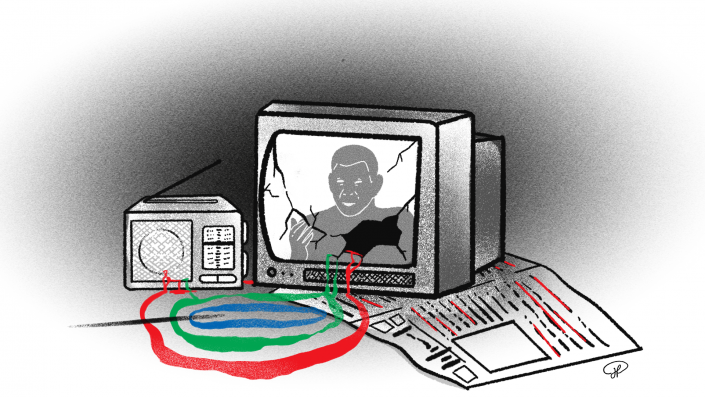
On World Press Freedom Day last May 3, President Rodrigo Duterte, in his message celebrating the occasion, stressed the importance of having a “free and responsible press” that “must be protected from all forms of threat and intimidation so that they may fully serve the best interest of the people.” The statement did not sit well with many online, but not because what he said was incorrect.
What angered many was that it was not reflective of reality.
It is no secret that Duterte has long been antagonistic toward the media. When he first unveiled his cabinet in 2016, Duterte, responding to a question on how to address media killings in the country, said that corrupt journalists deserved to die.
A year later, Duterte would lash out against newspaper giant Philippine Daily Inquirer and broadcast company ABS-CBN for their critical coverage of his administration, warning them that karma would someday catch up to them.
These threats became more imminent as the government began taking actions that would stand in the way of journalists doing their duties. Take, for instance, how Pia Ranada, Rappler’s Palace reporter, was barred from entering the Malacañang complex in 2018. Presidential spokesperson Harry Roque later confirmed that Duterte himself issued the order. Until today, the ban stands.
In a surprising but not altogether unexpected move, the President’s foreboding would soon bear fruit. Just last year, Rappler researcher-writer Reynaldo Santos Jr. and Rappler chief Maria Ressa were convicted of cyber libel, a verdict that brought unrest for the press as it had arguably allowed for the retroactive application of the law. Meanwhile, after almost a hundred hours of congressional hearings on ABS-CBN’s franchise, the country’s largest television network was pulled off the air.
Not only were these vindications for the president’s ill wishes against these media figures, but it was also a manifestation of his term-long maltreatment of the press.
These are not the only proof of Duterte’s browbeating toward the media. Only by his term’s third year in 2019, over 100 cases of harassment and attacks on journalists were already reported. In the 2021 World Press Freedom Index, the Philippines slid down two spots, landing 138th out of 180 countries. This is the fourth year in a row that the country abased, dropping the country’s media freedom score further down the “bad” category.
Despite declaring “protection”, all the state has brought is destruction to those who dare raise criticisms against its own faults. The President’s pretense falls empty—his words have been nothing but platitudes. He faces a camera and dares to sing praises on the “vital role” of the group whose freedom to do their duty he once proclaimed was a “privilege”.
While his words may ring hollow, the recent incidents show that they nonetheless speak the truth. The President thinks that it is easier to go on air, perform, and talk than to live his words. But people should know that words are nothing but sound; it is your actions that tell.
